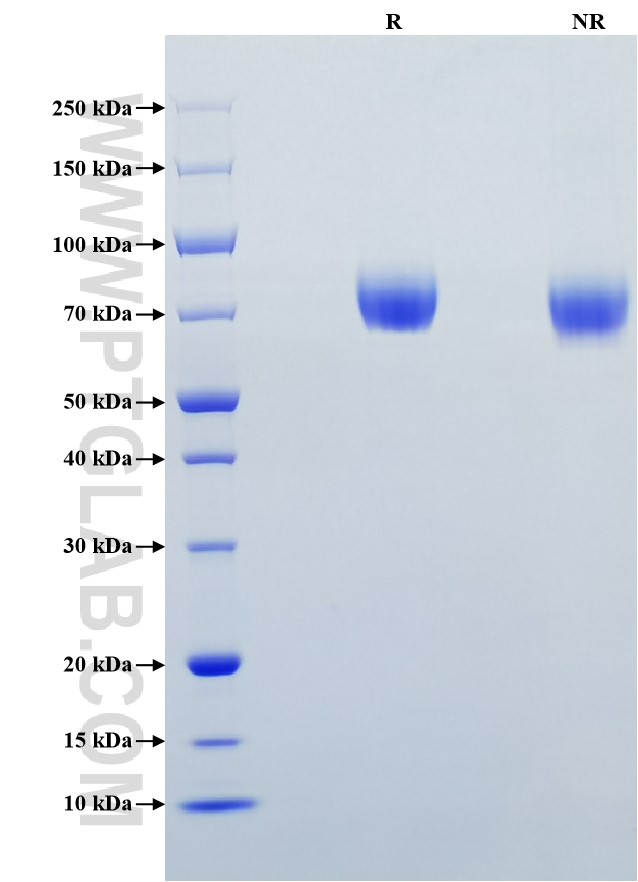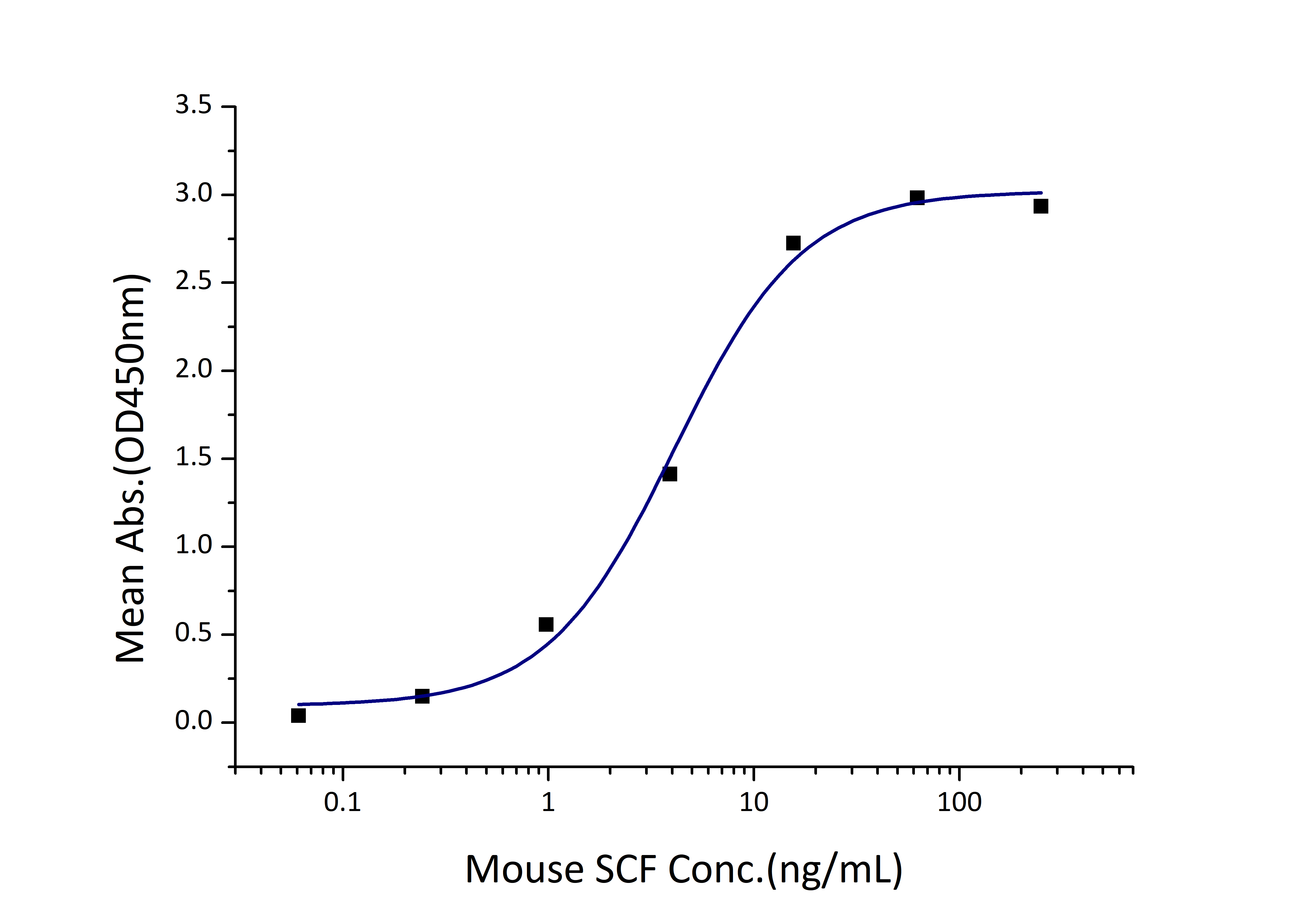Recombinant Mouse CD117/c-kit protein (His Tag)
种属
Mouse
纯度
>95 %, SDS-PAGE
标签
His Tag
生物活性
EC50: 2-8 ng/mL
验证数据展示
产品信息
| 纯度 | >95 %, SDS-PAGE |
| 内毒素 | <0.1 EU/μg protein, LAL method |
| 生物活性 |
Immobilized Mouse CD117 (His tag) at 1 μg/mL (100 μL/well) can bind Mouse SCF (His tag) with a linear range of 2-8 ng/mL. |
| 来源 | HEK293-derived Mouse CD117 protein Ser25-Pro527 (Accession# P05532-1) with a His tag at the C-terminus. |
| 基因ID | 16590 |
| 蛋白编号 | P05532-1 |
| 预测分子量 | 56.8 kDa |
| SDS-PAGE | 65-85 kDa, reducing (R) conditions |
| 组分 | Lyophilized from 0.22 μm filtered solution in PBS, pH 7.4. Normally 5% trehalose and 5% mannitol are added as protectants before lyophilization. |
| 复溶 | Briefly centrifuge the tube before opening. Reconstitute at 0.1-0.5 mg/mL in sterile water. |
| 储存条件 |
It is recommended that the protein be aliquoted for optimal storage. Avoid repeated freeze-thaw cycles.
|
| 运输条件 | The product is shipped at ambient temperature. Upon receipt, store it immediately at the recommended temperature. |
背景信息
CD117, also known as c-Kit and SCFR, is a transmembrane protein with tyrosine kinase activity encoded by the oncogene c-kit. It is a member of the type III receptor tyrosine kinase family, which also includes CSF-1R, PDGFRβ, PDGFRα, and FLT3. CD117 is expressed on hematopoietic stem cells and progenitor cells, mast cells, and is also found in a wide range of non-haemopoietic cell types (including melanocytes, germ cells, astrocytes, renal tubules, breast glandular epithelial cells, sweat glands, and interstitial cells of Cajal). CD117 plays an important role in early haemopoiesis. It is also involved in pigmentation, fertility, gut movement, and some aspects of the nervous system.
参考文献:
1.Y Yarden, et al. (1987) EMBO J. 6(11):3341-51. 2.L K Ashman (1999) Int J Biochem Cell Biol. 31(10):1037-51. 3.Johan Lennartsson (2012) Physiol Rev. 92(4):1619-49. 4.Brittni M Foster, et al. (2018) Biomedicines. 6(1):31.



